Birds are one of the cleanest living beings on earth. They clean themselves twice a day and also bath regularly . The cleaning method involves Preening and bathing. The birds do this to remove pest, dirt and other debris that get stuck into their body specially the feathers. In this section we will see the different ways the various species of birds bathe
The birds stand in water regularly for various reasons like cooling their body by wetting their beaks and legs, Searching for aquatic food like crustaceans , fish etc. or to bathe
The various species have different methods of taking bath.
Perch Diving :
Some birds exhibit a behaviour of diving into water and quickly flying out. This is not usually for hunting for food. The birds do this for plunging into water and wetting themselves . The birds sit on a perch overlooking the water body. They scan for predators and then quickly plunge into the water and go back to the perch. It may take several dives to complete a bath depending on the size of the bird. Some birds do not depend on perches and they Hover over water and then plunge into it. This type of bathing can be seen in Kingfishers , Drongos and Bee eaters .
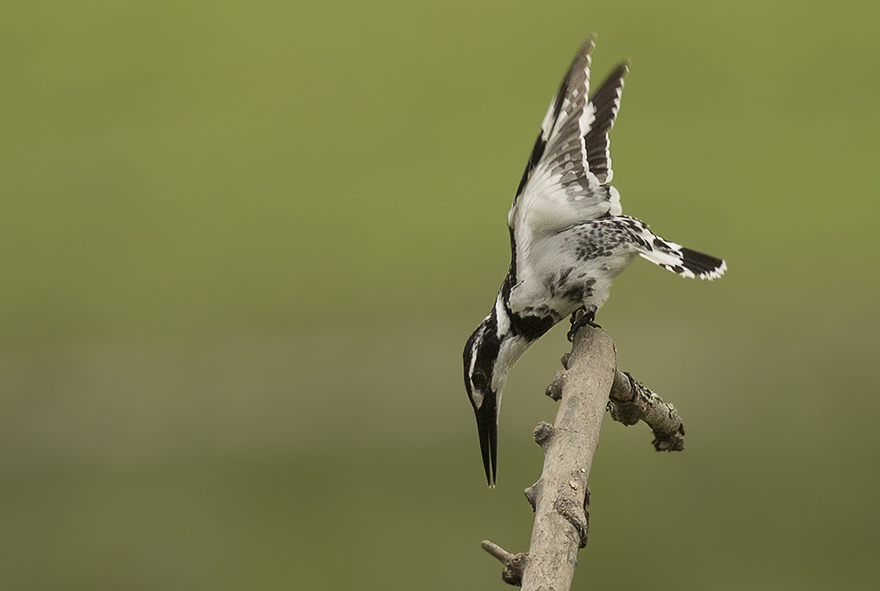
The swallows and swift have a technique of flying close to water surface and wetting their bodies on the surface. They keep flying in a zigzag manner and do this for hours together
Foliage Bathing :
The smaller birds are always vulnerable to predation if they come out in open. So they take bath in a unique way hidden in the tress and shrubs. The water collected in the leaves due to dew and rain is used by these birds. They will wet themselves by repeatedly rubbing their bodies against the leaves. This is called Leaf – bathing. This can be seen in Finches, White eyes, Flowerpeckers This is not restricted to small birds. Some times even larger birds like the hornbill will use the water collected in bigger leaves to bathe.
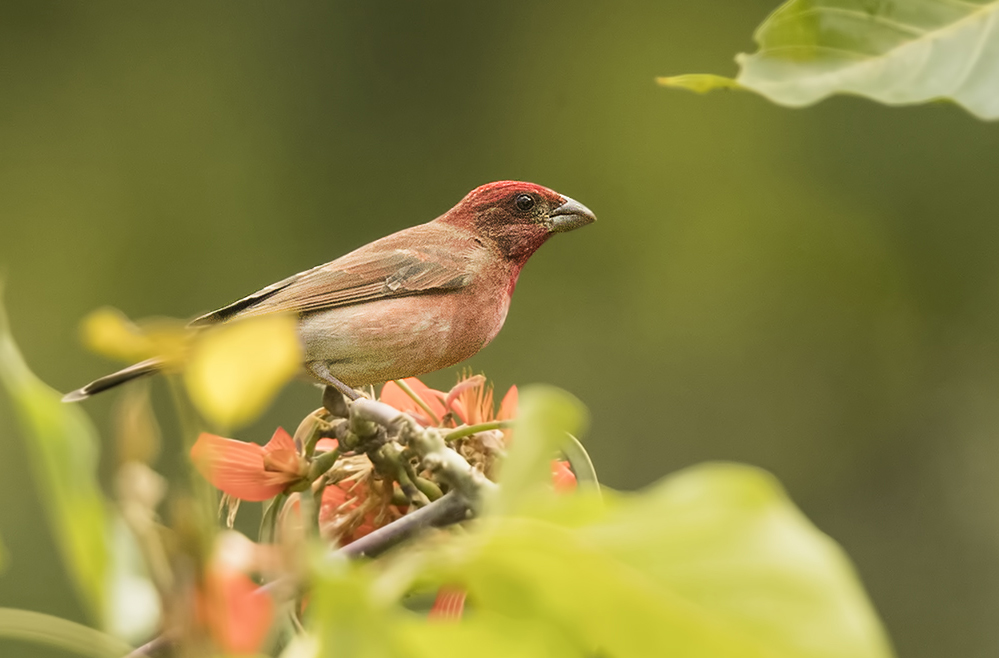
Rain Bathing :
Some birds will welcome the rain showers by spreading their wings and tails to get completely drenched in the rain. Such opportunistic bathing can be seen even in garden birds when the garden sprinkler is switched on. They do this to clean and also cool themselves

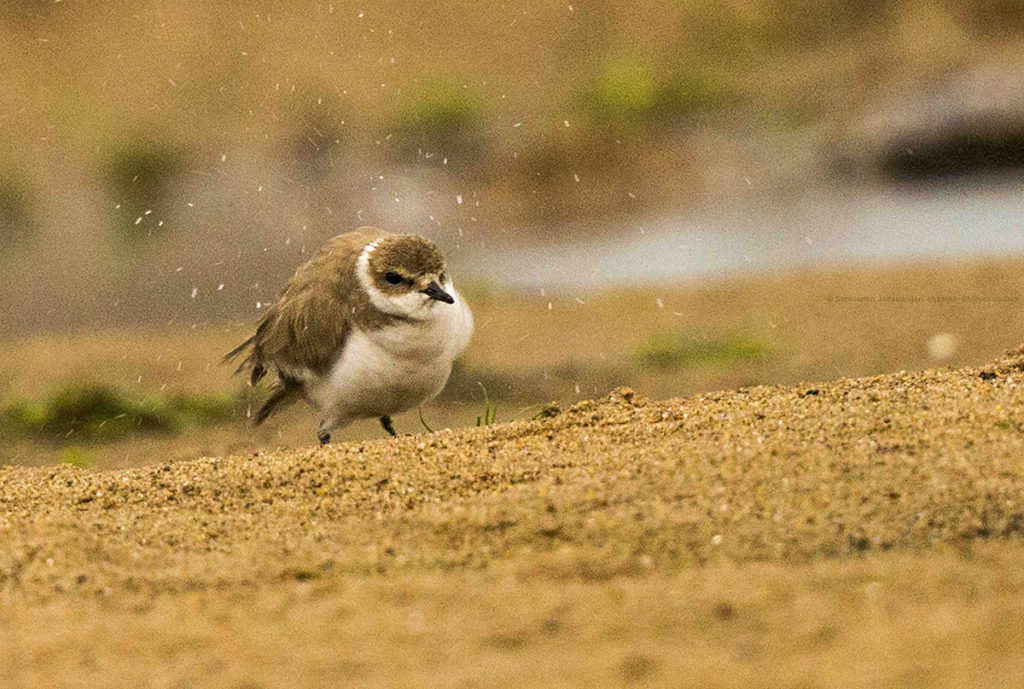
Surface Bathing :
This behaviour is exhibited by birds that can swim. they will swim on the surface of water and dip their heads into the water. Then they will flutter their wings rapidly and throw water on to their body and get drenched. This can be seen in Ducks, Geese, Coots and Grebe
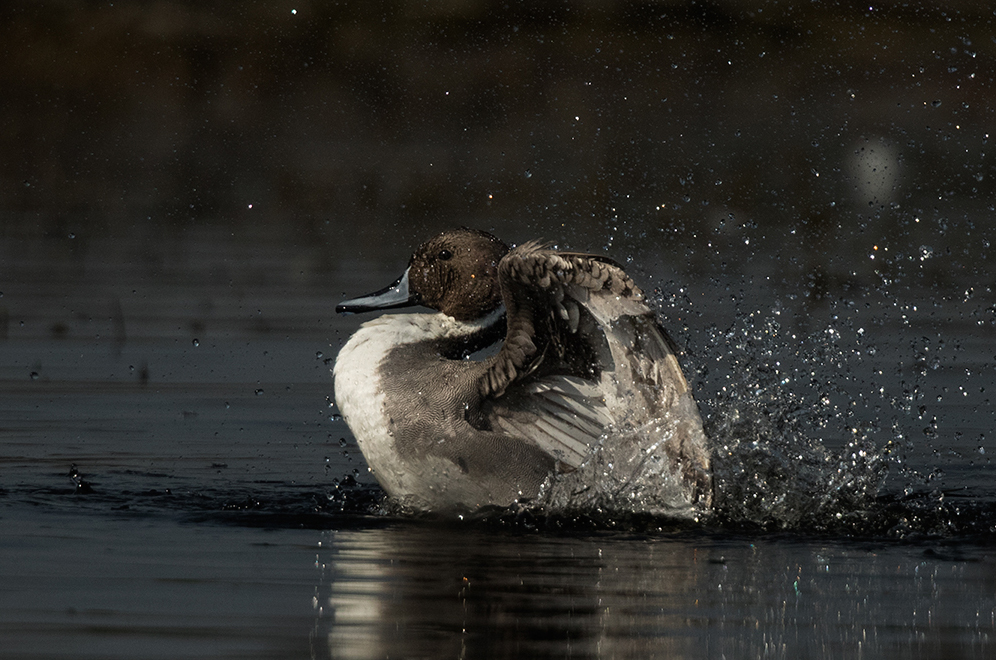
Shore Bathing :
this is the most common type of bathing. this is exhibited by a wide range of birds from small birds like Tits to large birds like Vultures. This is exhibited by the birds bathing in bird baths and Puddles. The bird will alight at the water edge or a little far away and scan the area for danger from Predators or territorial fights. The smaller birds will check the depth of the water before plunging. The bird squats down on its belly and rocks forward to wet its wrist and flight feathers on wings, then it wriggles its body and flutters its wings to thrown water on its back. Each flurry lasts for a few seconds and is followed by breaks to check danger from predator or territorial fights. The smaller birds then go to safe areas to preen and dry themselves while the large ones do it near the water
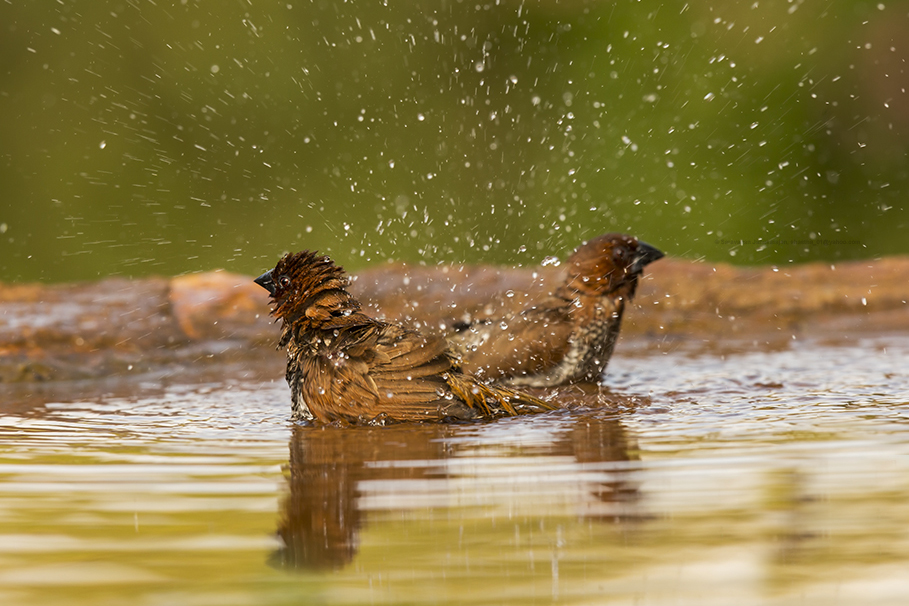 Plunging :
Plunging :
This is exhibited by the birds like Cormorants and Darters. They swim on the water surface and then plunge deeper into water at regular intervals to wet their bodies. They then climb on to perches and open their wings to dry for a long time.

The bathing is more regular in Hotter climate than the colder times. The bathing usually occurs during the hottest time of the day. This is because the predators are slow or dormant , the bird needs cooling, the wings dry faster and this is most unproductive part of the birds day.
One must remember that during and after bath the bird is most vulnerable to predators as they are distracted and their wing feathers are wet.ter if it is upto their knee levels only.